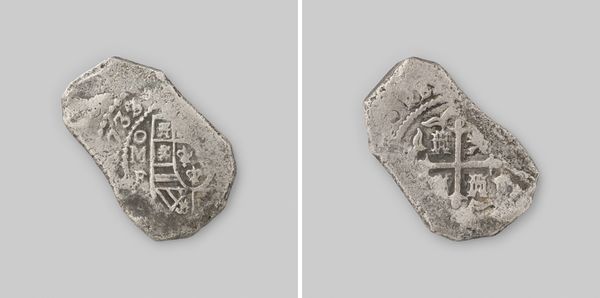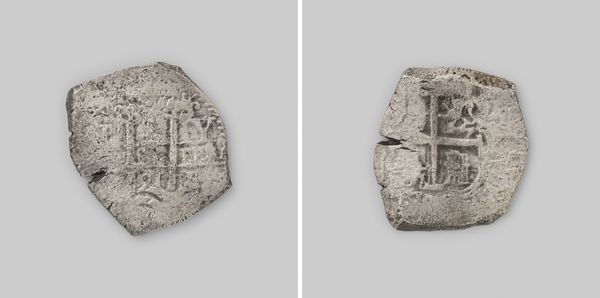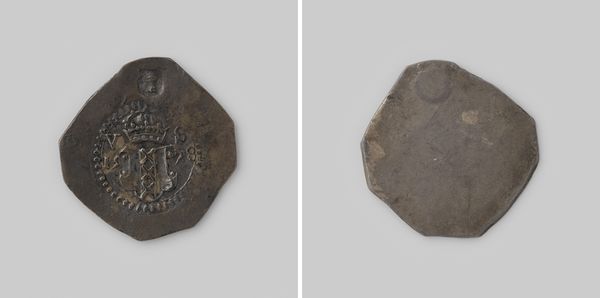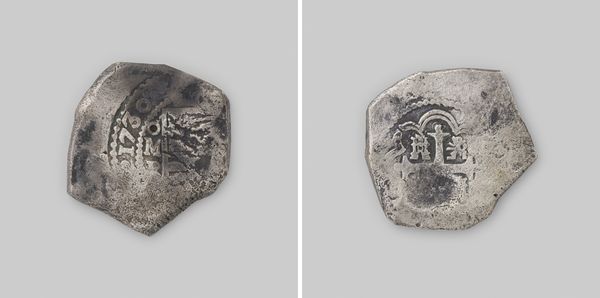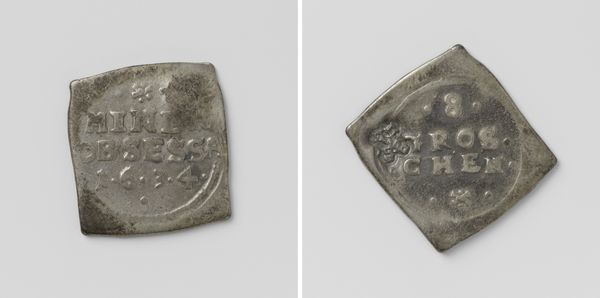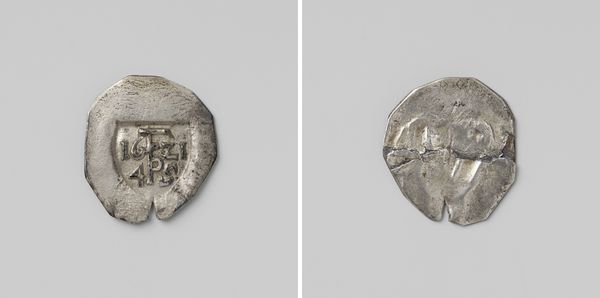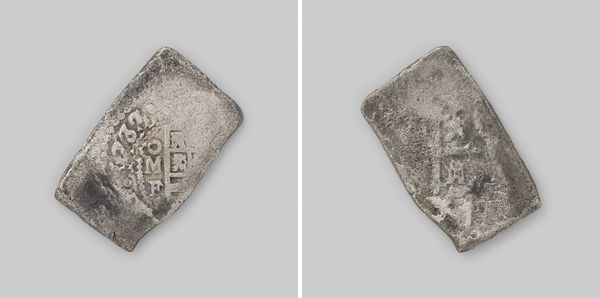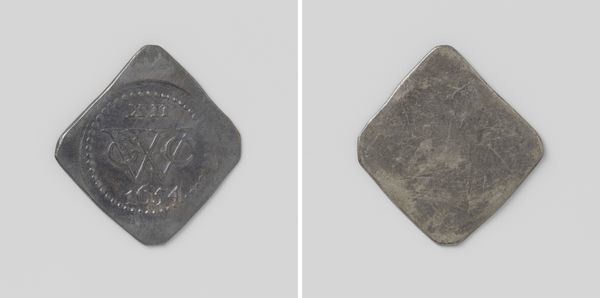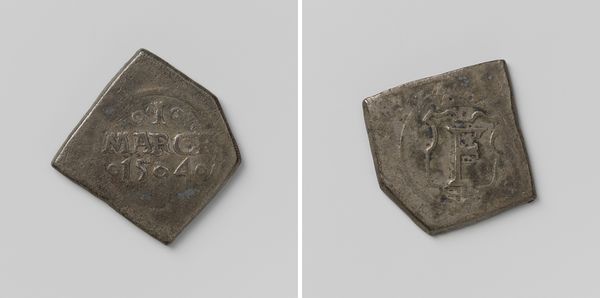
Reaal van achten, geslagen te Mexico, munt uit het wrak van de Oost-Indiëvaarder 't Vliegend Hart 1732
0:00
0:00
metal
#
baroque
#
metal
#
coin
Dimensions: height 3.7 cm, width 3.2 cm, weight 252 gr
Copyright: Rijks Museum: Open Domain
Curator: This fascinating piece is a Spanish eight-real coin, dating from 1732. It was minted in Mexico and remarkably recovered from the wreckage of the Dutch East India Company ship, the 't Vliegend Hart. Editor: Immediately striking is the coin’s somewhat brutal, almost primal appearance. Its irregular, almost rhomboid shape clashes with what one usually associates with coinage. The metallic sheen, aged by its maritime history, emits an aura of the baroque era from which it hails. Curator: Absolutely, the baroque stylistic features are evident not in its shape, but rather in the detailed heraldic symbols on each side. We see the Spanish coat of arms – a powerful statement of imperial authority stamped right onto the metal. Considering it was aboard a Dutch vessel, there is irony embedded. Editor: Yes, and from a purely formal perspective, observe how the coin’s crude shape draws more attention to these stamped designs; they seem less ornamental and more functional. These symbols carry weight as tools of societal inscription and speak more robustly from a deliberately flawed plane. Curator: Indeed. The recovery of this coin from a shipwreck also shapes its current presentation. Its journey across the ocean floor has impacted its material presence; seawater corrosion is evident. What were the politics around Dutch/Spanish relations, the context within which we interpret an object? Editor: Excellent points. That leads me to thinking if a more rounded version were to present itself to us here and now, would it not be more...sterile in essence? And so to contextualize this piece within current socio-political climates allows for renewed interrogation into currency value, function and validity of colonial symbolization. Curator: And the journey that this piece undertook aboard 't Vliegend Hart connects us to questions about Dutch and Spanish trade relations, colonialism, and global maritime history. These all combine to shape the coin’s cultural biography. Editor: Precisely! Thus we have moved between objecthood as cultural document of empire and more formally as a physical thing; and that liminality speaks of larger socio-political shifts occurring across cultural networks within that era.
Comments
No comments
Be the first to comment and join the conversation on the ultimate creative platform.
